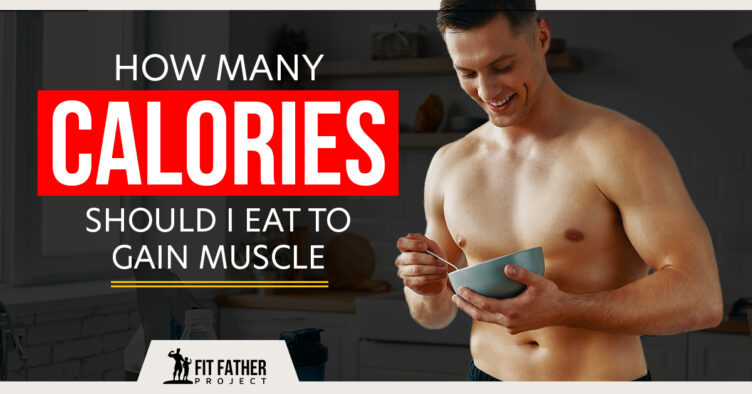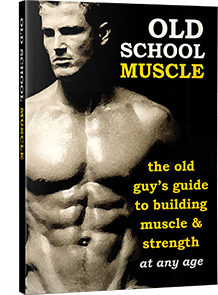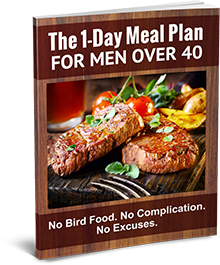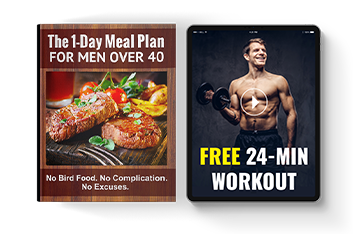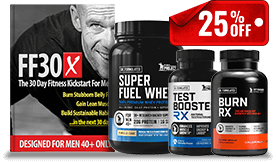As a man over 40, building muscle isn't always easy — but it can be done!
If you're training properly but not noticing the gains you should be, your diet is probably to blame.
The trouble for most ‘hard gainers' is that they aren't taking in enough calories to increase muscle size.
In this guide, we'll take a look at not only the number of calories you need to eat but how these calories should be split out to get the best effect.
I'm sure you'll agree; the last thing you want to do is add muscle but have too much fat on top to be able to see it!
The process of gaining muscle with minimal fat is what we like to refer to as lean bulking.
Let's jump in and learn how to gain some solid, lean muscle and finally answer the question, How many calories should I eat to gain muscle?
This video will teach you how to calculate YOUR daily calories for muscle building!
How To Start Building Muscle After 40?
The most obvious option is to hit the gym. However, unless you know what you're doing, you could end up wasting time doing training that won't benefit you.
To build muscle, you need to get a good balance between training, recovery, and feeding.
Muscles are torn in the gym, fed in the kitchen, and built in the bed.
This means using a workout plan that allows good recovery periods and an eating plan that adequately covers your calorie needs.
Our Old School Muscle program is a pre-prepared plan that incorporates the perfect blend of all these factors. It's vitally important that you get these three things in balance first, or you will not be successful.
How Guys 40+ Are Using “Old School” Secrets To Build Age-Defying Muscle
Ever thought you were “over the hill” or “too far past your prime” to build muscle and get strong again? Well, think again…
Why Is Eating So Important To Building Muscle?
Eating is what will fuel your muscles and also repair them after training has broken them down. If you train hard but don't eat right, your broken-down muscles won't get the nutrients they need to repair and grow.
To illustrate my point, imagine building a wall. The bricks are your muscles, and your calorie intake is the mortar. If you don't have enough mortar, you will never be able to build a bigger wall.

Also, if you don't let the mortar set (resting your muscles), it will never be stable enough to get bigger or stronger.
Growing is a result of using your muscles to their limits, which causes micro-tears that heal and strengthen when you eat and rest.
Therefore, to gain muscle, you must eat more calories and rest your muscles!
How Many Calories Should I Eat to Gain Muscle?
The ideal number is between 250 and 500 calories over your maintenance figure. Of course, to understand your total intake, you'll first need to know what your maintenance figure is!
Your maintenance figure is simply the number of calories you need to use to complete all your activities in one day. It is often referred to as TDEE (Total Daily Energy Expenditure).
Consuming this number of calories will keep your body in exactly the same shape and weight as it is now. But that will change as your metabolism and activity levels change!
If you eat too few calories, you will not have enough energy for your tasks, and you will not gain muscle. If you have too many calories, you'll start to store excess fat — unless you're training right, in which case these extra calories will help you gain muscle.
This still leaves you asking how many calories should I eat to gain muscle, doesn't it?
Your TDEE can be calculated in two ways:
- Take your weight in pounds and multiply it by 14 to get your lower calorie maintenance level. Multiply it by 17 to get your higher level. The exact amount you need will be within these figures, depending on your metabolism and activity level.
- Use an online calorie counter like the one we offer you by clicking here. This will take into account your age, gender, height, and current level of activity. Obviously, this will be a much more accurate figure!
How Should These Calories Be Split?
You should consider which foods you're eating and ensure you have the right macro split every time. This will make sure your body is working at optimal efficiency!
The Split
Your food needs to consist of around 40% carbs, 35% protein, and 25% fat. Sticking to this will assist your body in having the right nutrients when it needs them and help you gain muscle.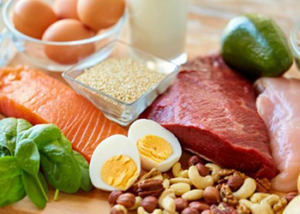
The ideal way to consume these calories is through five meals. Many diets will advocate more than this, but you are likely to find this exceptionally difficult to stick to when you have a busy life!
This method allows you to have breakfast, lunch, and dinner, as well as two snacks.
Meal replacement bars and protein shakes make excellent choices for the between-meal snacks.
Your diet is easier to prepare than you think!
You simply need to understand which foods class as carbs, protein, and fat:
- Carbs – Sweet potato, wholemeal pasta, quinoa, and brown rice. It is important to note that these are healthy carbs and not the same as the ones you will obtain from pasta, white rice, or regular potatoes.
- Protein – lean meats, such as chicken and beef, are excellent sources of protein. You can also eat sardines and egg whites.
- Fats – Egg yolks! (This is handy since you can eat the white for your protein content.) Avocado is also a good source of healthy fat, as is coconut oil.
You can also eat virtually any vegetable with as high a content as you like. These can help you to feel full and provide a range of valuable nutrients.
Here’s A Free Weight Loss Meal Plan For Busy Men 40+
Discover exactly what to eat for breakfast, lunch, and dinner to lose belly fat & feel energized 24/7 without hard dieting...
Timing Your Calorie Intake
A final point that is worth noting is that to optimize the effect of the calories you absorb, you should position them around your main activity.
For example, if you like to exercise in the morning, then you should aim to have your protein shake after your exercise routine, mid-morning.
If you prefer evening exercise, you may find it more beneficial to have a shake later in the evening. This should be a Casein protein to assist you while you sleep!
The answer to the question “How many calories should I eat to gain muscle?” is relatively straightforward once you have calculated your maintenance level.
You'll find the support we provide here at the Fit Father Project to be invaluable, and the lessons will help you build muscle while creating your own schedule and successfully achieving your goals!
Stuart gained his Diploma in Personal Training & Sports Medicine through Premier Global, back in 2001. In 2018, he completed his Level 1 Precision Nutrition qualification. Throughout his career in Fitness, Stuart has trained hundreds of clients, worked in almost every position in the industry, and ran his own successful training studio. After a hiatus away from the Fitness industry, working in Corporate Management and Finance, Stuart returned to what he loves… Fitness! This return led to a chance meeting with Dr. Balduzzi, and a place in the Fit Father Project team.Stuart Carter, Dip. PT, Precision Nutrition 1
C.O.O., The Fit Father Project
This proven "Old School Muscle Program For Guys 40+" combines the “old school” bodybuilding secrets with the “new school” science… to produce muscle & strength building results fast. Only for guys 40+ who want to build muscle. If you're frustrated with stubborn belly fat, failed diets, and time-consuming workouts, this is the answer you’ve been looking for…Here’s How Busy Guys 40+ Are Building Age-Defying Muscle And Strength… Working Out Just 3 Hours Per Week...
See the Old School Muscle (OSM) Program overview here. You’ll discover how this proven program has helped thousands of guys 40+ pack onage-defying muscle and strength – the smart & sustainable way. »
*Please know that weight loss results & health changes/improvements vary from individual to individual; you may not achieve similar results. Always consult with your doctor before making health decisions. This is not medical advice – simply very well-researched info on answering the question, “How many calories should I eat to gain muscle?”

